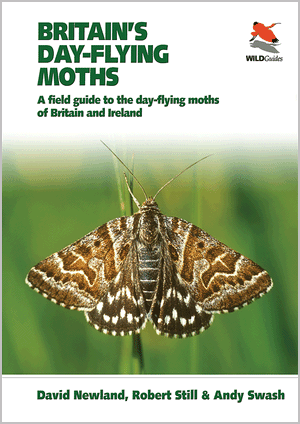Britain's Day-flying Moths: A Field Guide to the Day-flying Moths of Britain and Ireland
David Newland, Robert Still, & Andy SwashTechnical Advice by Mark Parsons
Princeton University Press WILDGuides | 2013
224 pp. | 15 x 21 cm | 200+ colour photos. 155 colour distribution maps
224 pp. | 15 x 21 cm | 200+ colour photos. 155 colour distribution maps
Paperback | £17.95 / $29.95
| ISBN: 9780691158327
Roughly 60 species of
butterfly and about the same number of dragonflies are found in the
UK. These two groups of insects have become popular targets for
study by amateur naturalists in recent years - not least by birders,
lured by anything that can regarded as an honorary bird. While out
studying these groups, the observer is bound to come across
day-flying moths - if only a Six-spot Burnet or Silver-Y - and with
perseverance many more species will be encountered. Indeed, Butterfly Conservation's ever more popular annual Big Butterfly Count asks
observers to record day-flying moths as well as butterflies. Since
there are only about twice as many day-flying moths as butterflies,
they are a logical progression for the birder-turned-entomologist.
Butterflies and
dragonflies are well-served by field guides, including companion
guides Britain's Butterflies and Britain's Dragonflies in the same series, and with the appearance of
the magnificent Britain's Hoverflies earlier this
year, WILDGuides have most of the easily-identifiable diurnal insects
covered. Up until now identifying day-flying moths has required the
use of detailed field guides like the Field Guide to the Moths of Great Britain and Ireland and its companion Field Guide to the Micro-Moths of Great Britain and Ireland - and finding
the relatively small number of day-flying moths amongst the 900
species of macro-moth or 1,000+ species of micro-moth in these books
might be a challenge. Given the numbers, they could be easily covered
by a smaller field guide. Enter Britain's Day-Flying Moths...
There is no
hard-and-fast definition of a day-flying moth. All moths can fly by
day, but some of them do it more frequently than others, or or more easily disturbed from their resting places, while a number
of species are clearly diurnal. In all, some 133 species of
macro-moth are generally considered to be day-flyers, with an
additional 22 micro-moths adding to the list. All of them are covered
by this guide. The format of the book follows previous WILDGuides
publications. All relevant information is to be found on a single
page, images are all high-quality photographs and supporting data is
accurate and concise. A line on the top-left hand corner of each page
indicates the true length of the forewing. The maps are a useful
feature - sufficiently large to allow resolution of distributions at
local scales. As with other WILDGuides, there is attention to
conservation status: species that are Nationally Rare, Nationally
Scarce, UK BAP species and those that appear in the British Red Data
Book are clearly indicated. An annotated checklist at the end of the
book provides tabulated information on ecology and conservation
status.
As with other
WILDGuides publications, profits finance an appropriate conservation
organisation: in this case Butterfly Conservation.
Another great addition
to the field naturalist's arsenal. Highly recommended!
References
Newland, D. & Still, R. (2010) Britain's butterflies: a field guide to the butterflies of Britain and Ireland (2nd edition). WILDGuides / Princeton University Press: Princeton NJ. 224 pp.
Smallshire, D. & Swash, A. (2010) Britain's dragonflies: a field guide to the damselflies and dragonflies of Britain and Ireland (2nd edition). WILDGuides / Princeton University Press: Princeton NJ. 208 pp.
Sterling, P., Parsons, M. & Lewington, R. (2012) Field guide to the micro-moths of Great Britain and Ireland. British Wildlife Publishing: Gillingham, Dorset. 416 pp.
Waring, P., Townsend, M. & Lewington, R. (2009) Field guide to the moths of Great Britain and Ireland (2nd edition). British Wildlife Publishing: Gillingham, Dorset. 444 pp.

No comments:
Post a Comment